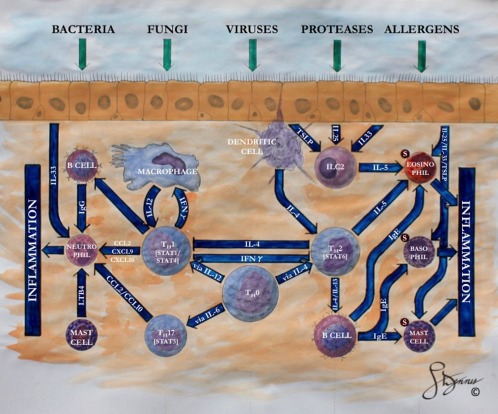Figure 1.

Highlighted cellular and molecular pathways in the type 1 and type 2 inflammatory cascades for patients with chronic rhinosinusitis. The typical chronic rhinosinusitis patients in North America and Europe follow a type 2 inflammatory response with prevalent eosinophilic mucin. Type 1 inflammation, classically see in Asian patients, manifests a predominately neutrophilic response. CCL = chemokine ligand; CXCL = chemokine ligand; ILC2 = type 2 innate lymphoid cell; S = Siglec‐8 receptor; TSLP = thymic stromal lymphopoietin; TH0 5 Undifferentiated T helper cell; TH1 5 T helper 1 cell; TH2 5 T helper 2 cell; TH17 5 T helper 17 cell; IFNγ 5 interferon gamma.
